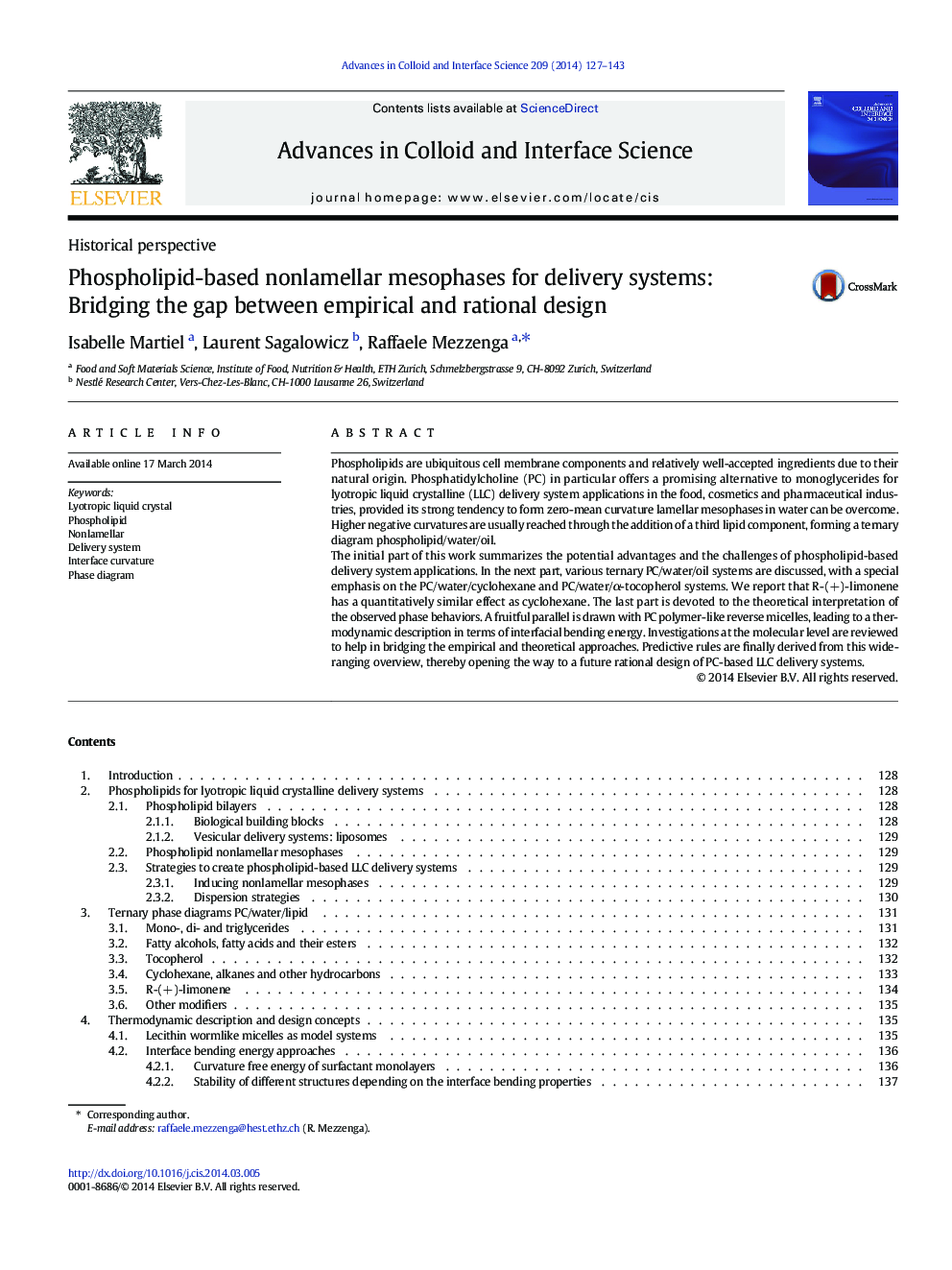| کد مقاله | کد نشریه | سال انتشار | مقاله انگلیسی | نسخه تمام متن |
|---|---|---|---|---|
| 590761 | 1453554 | 2014 | 17 صفحه PDF | دانلود رایگان |

• Phospholipid surfactants show well-defined, intrinsic self-assembly behaviors.
• Addition of a well-selected apolar oil can induce nonlamellar PC mesophases.
• Curvature energy model (Helfrich) of interfaces provides quantitative understanding.
• Molecular mechanisms explain curvature properties of phospholipid interfaces.
• Proposed design rules help to predict PC/water/oil ternary phase behavior.
Phospholipids are ubiquitous cell membrane components and relatively well-accepted ingredients due to their natural origin. Phosphatidylcholine (PC) in particular offers a promising alternative to monoglycerides for lyotropic liquid crystalline (LLC) delivery system applications in the food, cosmetics and pharmaceutical industries, provided its strong tendency to form zero-mean curvature lamellar mesophases in water can be overcome. Higher negative curvatures are usually reached through the addition of a third lipid component, forming a ternary diagram phospholipid/water/oil.The initial part of this work summarizes the potential advantages and the challenges of phospholipid-based delivery system applications. In the next part, various ternary PC/water/oil systems are discussed, with a special emphasis on the PC/water/cyclohexane and PC/water/α-tocopherol systems. We report that R-(+)-limonene has a quantitatively similar effect as cyclohexane. The last part is devoted to the theoretical interpretation of the observed phase behaviors. A fruitful parallel is drawn with PC polymer-like reverse micelles, leading to a thermodynamic description in terms of interfacial bending energy. Investigations at the molecular level are reviewed to help in bridging the empirical and theoretical approaches. Predictive rules are finally derived from this wide-ranging overview, thereby opening the way to a future rational design of PC-based LLC delivery systems.
Figure optionsDownload as PowerPoint slide
Journal: Advances in Colloid and Interface Science - Volume 209, July 2014, Pages 127–143